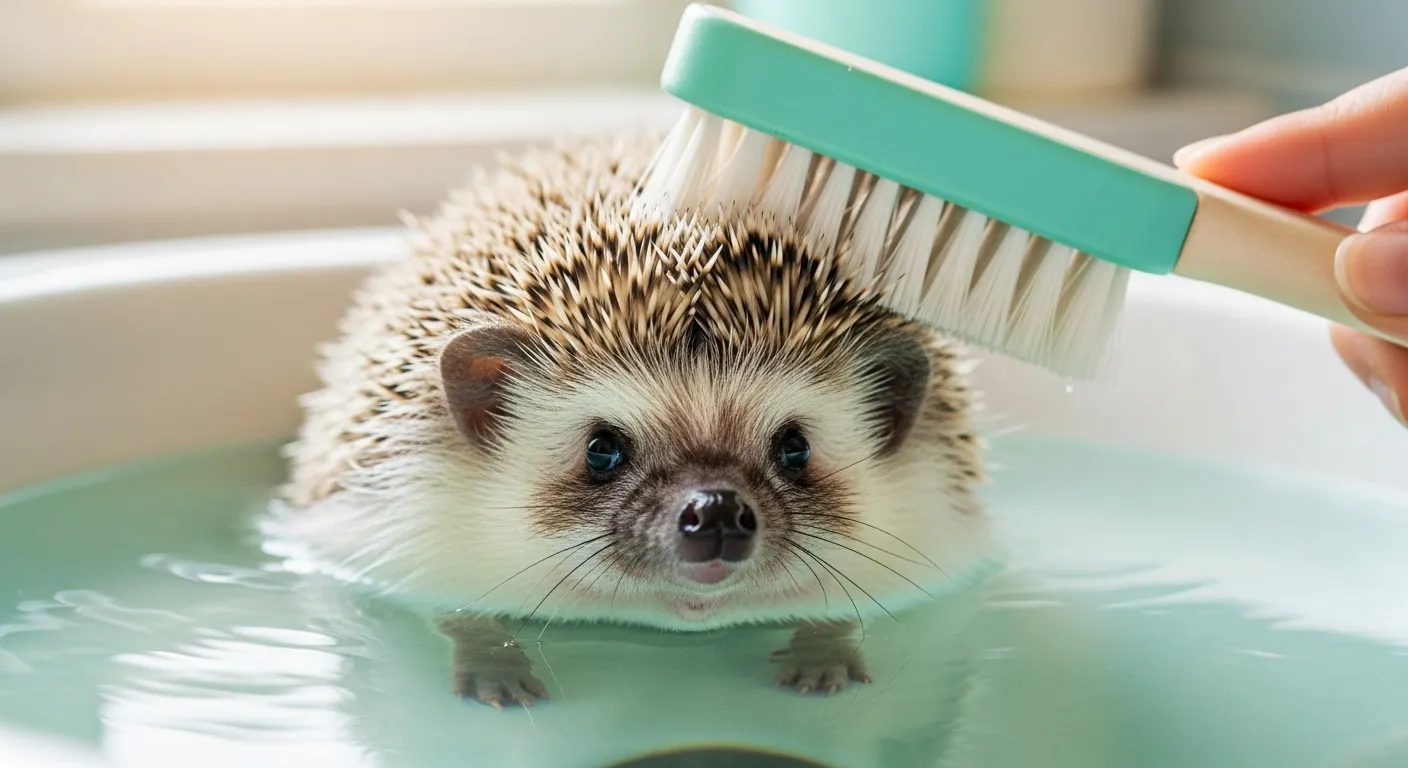Hedgehogs keep themselves clean most days. But sometimes dirt or bedding sticks to their quills. A quick bath helps remove that buildup. Clean quills mean less skin irritation and fewer health issues. This guide shows you how to do it right at home.
What Hedgehog Quills Do and Why Cleaning Matters
Quills protect hedgehogs from harm. They are not sharp like porcupine spines. Instead, they are soft and hollow. Dirt in quills can lead to dry skin or infections. Regular cleaning keeps your pet comfortable.
Hedgehogs shed quills now and then. This is called quilling. It happens most in young hedgehogs, around 4 to 6 weeks old and again at 16 weeks. New quills push out old ones. The process can itch or hurt. A bath during quilling soothes the skin.
For more on hedgehog growth stages, check our pet age calculator.
Signs Your Hedgehog Needs Quill Cleaning
Watch for these clues:
- Bedding or poop stuck at the base of quills.
- Dull or greasy-looking spines.
- Extra scratching or restlessness.
- Loose quills on the floor during cage cleaning.
If you see bald spots or red skin, skip the bath. Use our pet symptom checker to spot other problems.
Supplies for Cleaning Hedgehog Quills
Gather these items before you start:
- Lukewarm water (test on your wrist).
- Soft toothbrush or nail brush.
- Tear-free baby shampoo or oatmeal-based pet shampoo.
- Clean towels (one wet, one dry).
- Optional: Coconut oil for dry skin.
Avoid strong soaps. They dry out hedgehog skin.
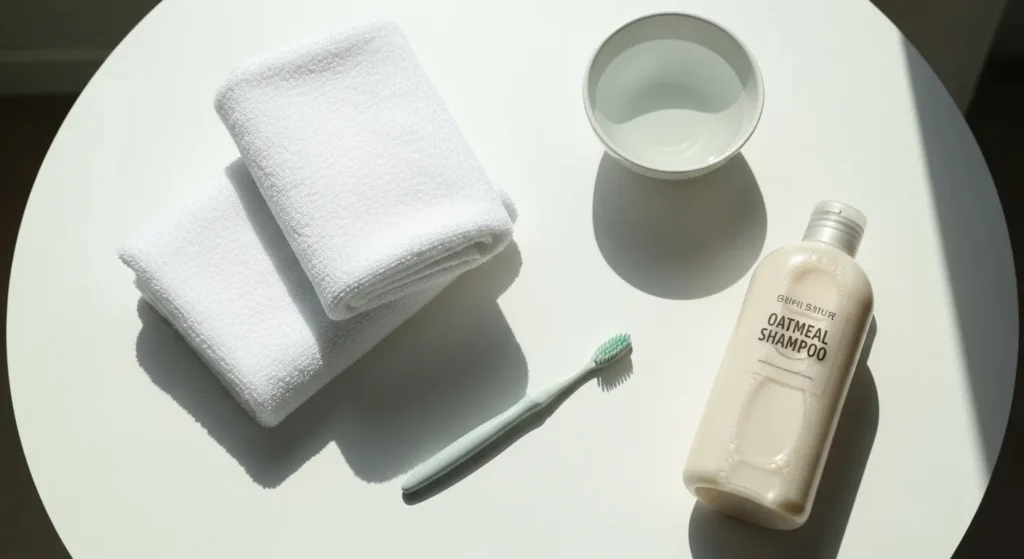
Step-by-Step Guide to Cleaning Your Hedgehog’s Quills
Bathe your hedgehog every 2 to 4 weeks, or when dirty. Keep sessions short, about 10 minutes. Most hedgehogs relax in water once they start.
Set Up a Safe Bath Area
Fill a sink or shallow tub with 2 to 3 inches of lukewarm water. The hedgehog should not touch the bottom. This keeps them swimming lightly. Place a towel on the edge to catch spills. Work in a warm room, around 75 degrees Fahrenheit.
Stay close. Hedgehogs can slip.
Bathe and Clean the Quills
Scoot under your hedgehog with both hands. Lift gently to avoid pricks. Lower them into the water belly up. Hold steady until they calm. Let them soak for 2 to 3 minutes.
Pour water over the quills with your free hand. Avoid the face, eyes, and ears. Add a drop of shampoo to the brush. Work in small circles, brushing down with the quill growth. Focus on the base where dirt hides. Rinse well with clean water.
Clean the feet last. Wipe off any poop gently.
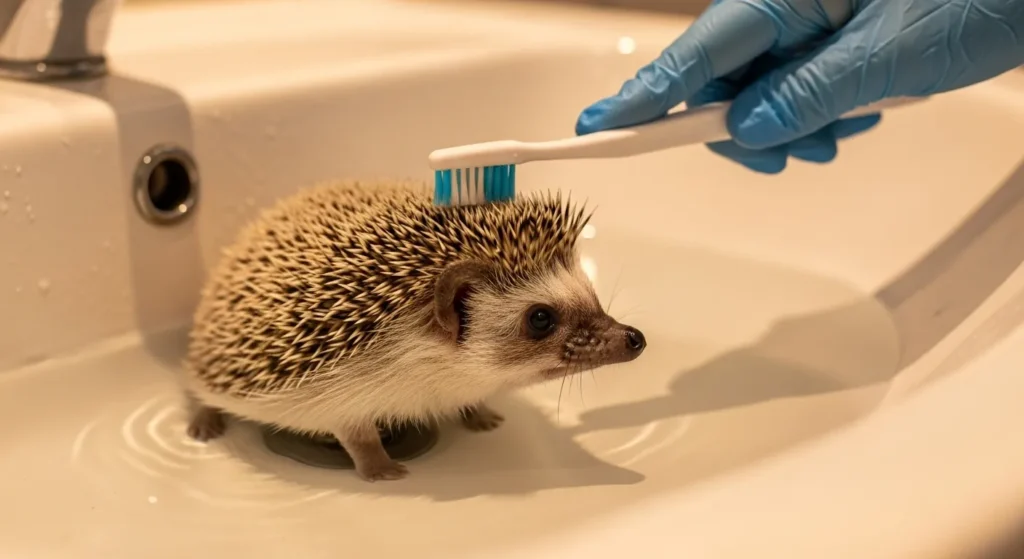
Dry Your Hedgehog Completely
Lift out and place on a warm towel. Pat dry from the belly up. Wrap them like a burrito. Most quills dry fast, but check underbelly spots. Use a hairdryer on low, cool setting from 12 inches away if needed.
Snuggle time helps here. Your hedgehog might huff at first, but it builds trust. Return to the cage only when fully dry. Add a dry towel inside if any dampness lingers.
Help with Quilling and Skin Health
During quilling, your hedgehog may eat less or act grumpy. Offer soft foods like cooked egg or mealworms. An oatmeal bath eases itch. Rub a tiny bit of coconut oil on dry areas after drying.
Keep humidity at 40 to 50 percent in the room. Low moisture worsens dry skin. For safe foods that support skin, see our guide on what vegetables can dogs eat—many work for hedgehogs too, like green beans.
Learn more about quilling from the Hedgehog Welfare Society.
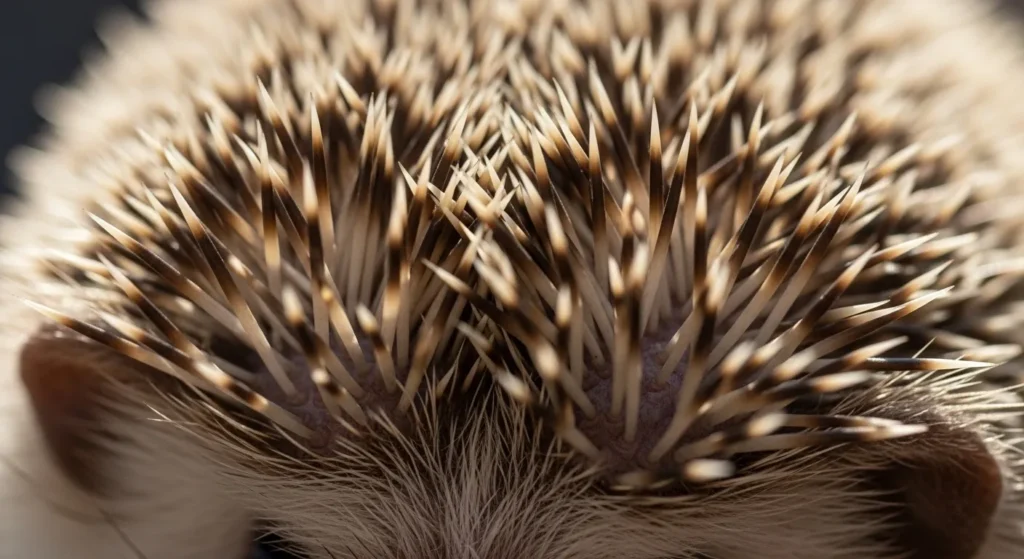
When to Call a Vet for Quill Issues
Most quill problems fix with home care. But see a vet if:
- Quill loss leaves bald patches over 20 percent of the body.
- Skin looks red, swollen, or has pus.
- Your hedgehog stops eating for two days.
- Loose quills have no round tip—could mean breakage.
Vets check for mites or infections. Early help prevents bigger troubles.
For similar pet care tips, read why is my cat drooling: causes and solutions.
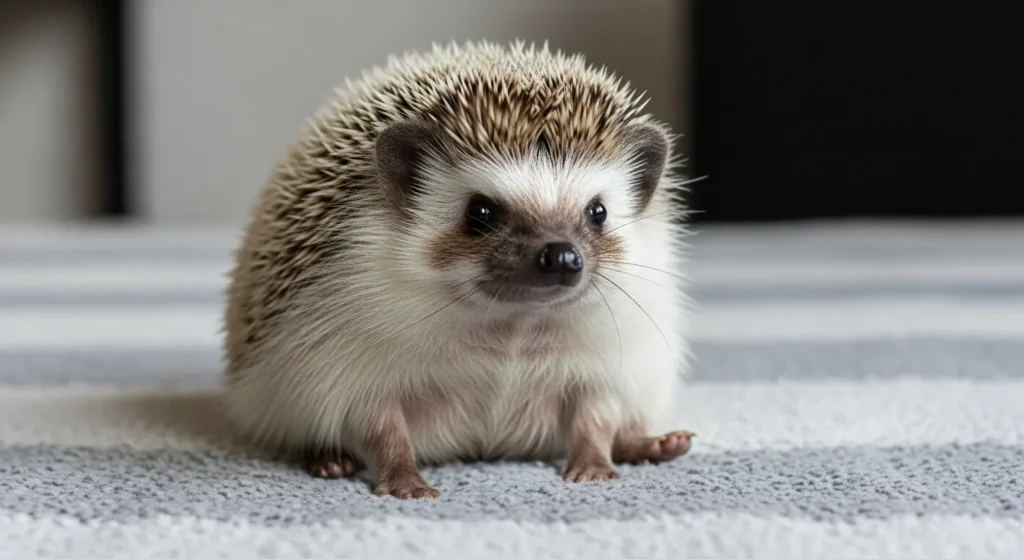
A clean hedgehog stays active and happy. Follow these steps, and you’ll both handle bath time with ease. Got questions? Drop a comment below.
